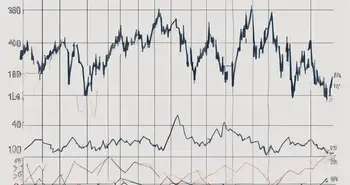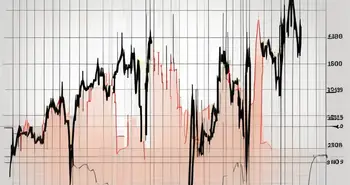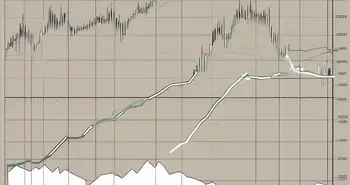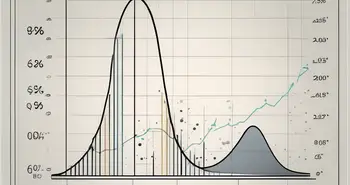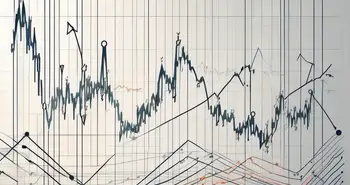Using the Commodity Channel Index Indicator
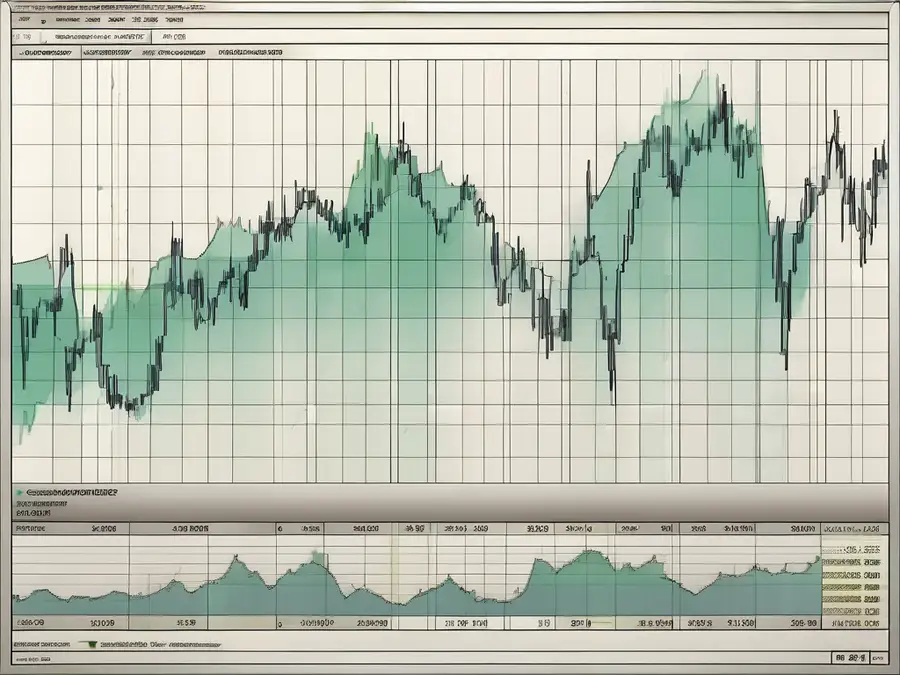
As a seasoned trader, I'm excited to share with you the ultimate guide to using the CCI indicator. In this comprehensive article, we will delve into the various aspects of this powerful technical tool and explore how it can elevate your trading game. So, let's get started!
Understanding the Basics of the CCI Indicator
Before we dive into the nitty-gritty details, let's first understand what the CCI indicator is. CCI stands for Commodity Channel Index, and it is a versatile oscillator that helps identify overbought and oversold levels in the market. Developed by Donald Lambert in 1980, this indicator has stood the test of time and remains a popular choice among traders.
The CCI indicator is based on the principle that market cycles tend to move from periods of low volatility to high volatility and vice versa. By measuring the deviation of price from its moving average, the CCI indicator provides valuable insights into potential trend reversals and market conditions.
What is the CCI Indicator?
The CCI indicator, as mentioned earlier, is an oscillator that quantifies the relationship between an asset's price and its average price over a specific period. It measures the statistical variation from the average price, providing a dynamic representation of market conditions. This enables traders to spot potential buying or selling opportunities.
The Importance of the CCI Indicator in Trading
Now, you might be wondering why the CCI indicator is significant in trading. Well, it offers a unique perspective on price action and market sentiment. By identifying overextended price levels, it helps traders gauge whether a market is overbought or oversold. This information can be invaluable when making trading decisions.
Furthermore, the CCI indicator is versatile and can be used in various market conditions, making it a valuable tool for both trend-following and countertrend strategies. Its ability to adapt to different asset classes, such as stocks, commodities, and forex, further enhances its usefulness.
How the CCI Indicator Works
Now that we've covered the basics, let's dive into how the CCI indicator works. The CCI is calculated using the following formula:
CCI = (Typical Price – n-period Simple Moving Average of Typical Price) / (0.015 x Mean Deviation)
The Typical Price is the sum of the high, low, and closing prices divided by three. The n-period Simple Moving Average (SMA) smoothens out the data points, providing a clearer view of price trends. The Mean Deviation measures the average deviation of price from its SMA.
Interpreting CCI readings involves understanding overbought/oversold levels, divergences, and trend identification, which we'll cover in the subsequent sections.
Setting Up the CCI Indicator
Now that you have a good grasp of the CCI indicator, let's explore how to set it up correctly. Proper configuration ensures accurate readings and improves your overall trading experience.
Choosing the Right Trading Platform for CCI
First and foremost, you need to choose the right trading platform that offers the CCI indicator. Look for a platform that provides flexible customization options, robust charting capabilities, and reliable data feeds. This will ensure that you have access to accurate and up-to-date CCI readings.
Step-by-Step Guide to Setting Up the CCI Indicator
Once you have the suitable trading platform, follow these steps to set up the CCI indicator:
- Open your chosen trading platform and select the desired asset.
- Add the CCI indicator to your chart by navigating to the indicators section.
- Set the input parameters, such as the time period and threshold levels, according to your trading strategy.
- Adjust the visualization options to ensure the CCI indicator is clearly visible on your chart.
- Take your time to familiarize yourself with the indicator's behavior by backtesting and analyzing historical price data.
By following these steps, you'll have a properly configured CCI indicator ready to assist you in making informed trading decisions.
Interpreting the CCI Indicator
Now that you have the CCI indicator set up, it's time to master the art of interpreting its readings. By understanding overbought and oversold levels, identifying divergences, and utilizing the CCI indicator for trend identification, you can unlock its full potential.
Understanding Overbought and Oversold Levels
The CCI indicator uses thresholds to identify overbought and oversold levels. Typically, readings above +100 indicate overbought conditions, suggesting a potential reversal or correction. On the other hand, readings below -100 indicate oversold conditions, signaling a possible upward price movement.
It's important to note that overbought and oversold levels should not be used in isolation. They should be considered within the context of the overall market conditions and in conjunction with other technical tools.
Identifying Divergences with the CCI Indicator
Divergences occur when the price and the CCI indicator move in opposite directions. This can be a strong signal of a potential trend reversal or continuation. Bullish divergences occur when the price forms lower lows, while the CCI indicator forms higher lows. Conversely, bearish divergences occur when the price forms higher highs, while the CCI indicator forms lower highs.
When identifying divergences, it's essential to confirm them with other technical indicators or chart patterns for increased accuracy.
Using the CCI Indicator for Trend Identification
The CCI indicator can also aid in trend identification. In an uptrend, the CCI indicator will typically stay above zero, while in a downtrend, it will remain below zero. Traders can use crossovers of the CCI line with zero as potential entry or exit signals, depending on their trading strategy.
Remember to consider the overall market trend and use additional tools to confirm the accuracy of the CCI indicator's signals.
Strategies for Using the CCI Indicator
Now that you have a solid understanding of the CCI indicator and how to interpret its readings, let's explore some effective strategies for using this tool.
Combining the CCI Indicator with Other Technical Tools
One powerful strategy is to combine the CCI indicator with other technical tools, such as moving averages, support/resistance levels, or trendlines. By utilizing multiple indicators, you can increase the reliability of your trading signals and minimize false alarms.
For example, you could consider entering a buy trade when the CCI indicator crosses above the 50-period moving average and the price breaks above a significant resistance level.
Timing Entry and Exit Points with the CCI Indicator
The CCI indicator can be a valuable tool for timing your entry and exit points. By waiting for the CCI indicator to move above or below the overbought or oversold levels, you can identify potential reversal points and time your trades accordingly.
Additionally, you can use the CCI indicator's crossovers with zero as entry or exit signals. For example, entering a buy trade when the CCI line crosses above zero and exiting when it crosses below zero.
Remember, it's crucial to combine these strategies with proper risk management techniques to protect your capital.
Common Mistakes to Avoid When Using the CCI Indicator
While the CCI indicator is a powerful tool, it's essential to be aware of common pitfalls to maximize its effectiveness. Let's explore some mistakes to avoid:
Avoiding False Signals with the CCI Indicator
It's important not to rely solely on the CCI indicator's signals. Use it in conjunction with other technical indicators or chart patterns to confirm its readings. This will help filter out false signals and increase the accuracy of your trading decisions.
The Risk of Overreliance on the CCI Indicator
While the CCI indicator is a valuable tool, it's crucial not to become overly reliant on it. No single indicator or strategy guarantees accurate predictions all the time. It's important to consider other factors, such as fundamental analysis and market sentiment, to make well-rounded trading decisions.
As an expert trader, I've personally witnessed the power of the CCI indicator in boosting my trading performance. Incorporating it into my strategies has provided valuable insights and helped me identify profitable opportunities. My advice to fellow traders is to thoroughly understand the CCI indicator, practice with it on historical data, and apply it alongside other technical tools for optimal results. Remember, consistency and proper risk management are key.
FAQ
What is the CCI indicator?
The CCI indicator, or Commodity Channel Index, is an oscillator that measures the deviation of an asset's price from its moving average. It helps identify overbought and oversold levels, providing valuable insights for traders.
How can the CCI indicator be used?
The CCI indicator can be used to identify potential trend reversals, spot overbought or oversold market conditions, and detect divergences. It can also be combined with other technical tools for more robust trading strategies.
What are the common mistakes to avoid when using the CCI indicator?
Two common mistakes to avoid are relying solely on the CCI indicator's signals without confirmation from other indicators, and overreliance on the CCI indicator alone without considering other factors, such as fundamental analysis or market sentiment.
With this comprehensive guide and personal insights, you now have the tools to harness the power of the CCI indicator effectively. Remember to apply proper risk management techniques and continuously refine your trading strategies to unleash its full potential. Happy trading!
Ready to take your trading to the next level with the CCI indicator? Discover the future of investing with Morpher, the revolutionary trading platform that leverages blockchain technology for zero fees, infinite liquidity, and a unique trading experience. Whether you're interested in stocks, cryptocurrencies, or even niche markets like NFTs, Morpher empowers you with fractional investing, short selling, and up to 10x leverage. Sign up now to gain full control over your investments with the Morpher Wallet and get your free sign up bonus. Elevate your trading strategies on a platform that's as innovative as you are. Sign Up and Get Your Free Sign Up Bonus today!

Disclaimer: All investments involve risk, and the past performance of a security, industry, sector, market, financial product, trading strategy, or individual’s trading does not guarantee future results or returns. Investors are fully responsible for any investment decisions they make. Such decisions should be based solely on an evaluation of their financial circumstances, investment objectives, risk tolerance, and liquidity needs. This post does not constitute investment advice.

Painless trading for everyone
Hundreds of markets all in one place - Apple, Bitcoin, Gold, Watches, NFTs, Sneakers and so much more.

Painless trading for everyone
Hundreds of markets all in one place - Apple, Bitcoin, Gold, Watches, NFTs, Sneakers and so much more.


